 |
| Royal Pump Room and Baths, Leamington Spa |
Leamington Priors
Leamington Spa was originally called Leamington Priors, named after the River Leam and Kenilworth Priory, who owned it in medieval times.
During the 18th century, when spa towns were becoming fashionable, the only known mineral spring in Leamington was situated on the Earl of Aylesford’s land. The Earl wanted the water to remain freely accessible and refused to build commercial baths on the site. A well was later built over the spring but people were still allowed to take small quantities of water for free.
 |
| The Jug & Jester pub, Bath Street, part of which used to house the theatre. The blue 'Spring' artwork marks the spot of Aylesford's Well. |
Two entrepreneurs, William Abbotts and Benjamin Satchwell, eagerly searched for a second spring. In 1784, they discovered a new saline spring on Abbotts’ land, and in 1788, Abbotts opened Leamington’s first baths. They were rebuilt by James Gould in 1826 and renamed Gould’s Original Baths and Pump Rooms.
More baths
As the town became more popular, the demand for mineral water grew and the search for new springs intensified. In the years that followed, four more springs were discovered. Leamington was overrun with a choice of baths. Feltham listed five different sets of baths in his 1815 guide:
• Abbotts' or Mrs Smith's Baths, Bath Street (1788)
• Wise’s Baths, Bath Street (1790)
• Read's Baths, Warwick Row, High Street (1806)
• Robbins’ Baths, Bath Street Bridge (1806)
• The New Pump Room Baths (1814)
The price of bathing at the old baths was:
A Hot Bath 2s 6d
A Child's Bath 1s 6d
A Marble Bath 3s 0d
A Cold Bath 1s 0d
The New Pump Room Baths
 |
| The Pump Room and New Baths at Leamington Prior from A Guide to all the Watering and Sea-bathing Places by John Feltham (1815) |
The Pump Rooms were designed by a local architect, CS Smith, and built at a cost of more than £20,000. According to Feltham, the mineral water was in such abundance and the pump that filled the baths so efficient that “the beautiful engine which supplies them, could force up as many tons of Mineral Fluid in a few hours, as would float a Man of War”. (1)
Dr Henry Jephson began treating patients here in 1823, prescribing a diet of plain meat, stale bread, plain puddings, sherry, black tea and butter to complement taking the waters!
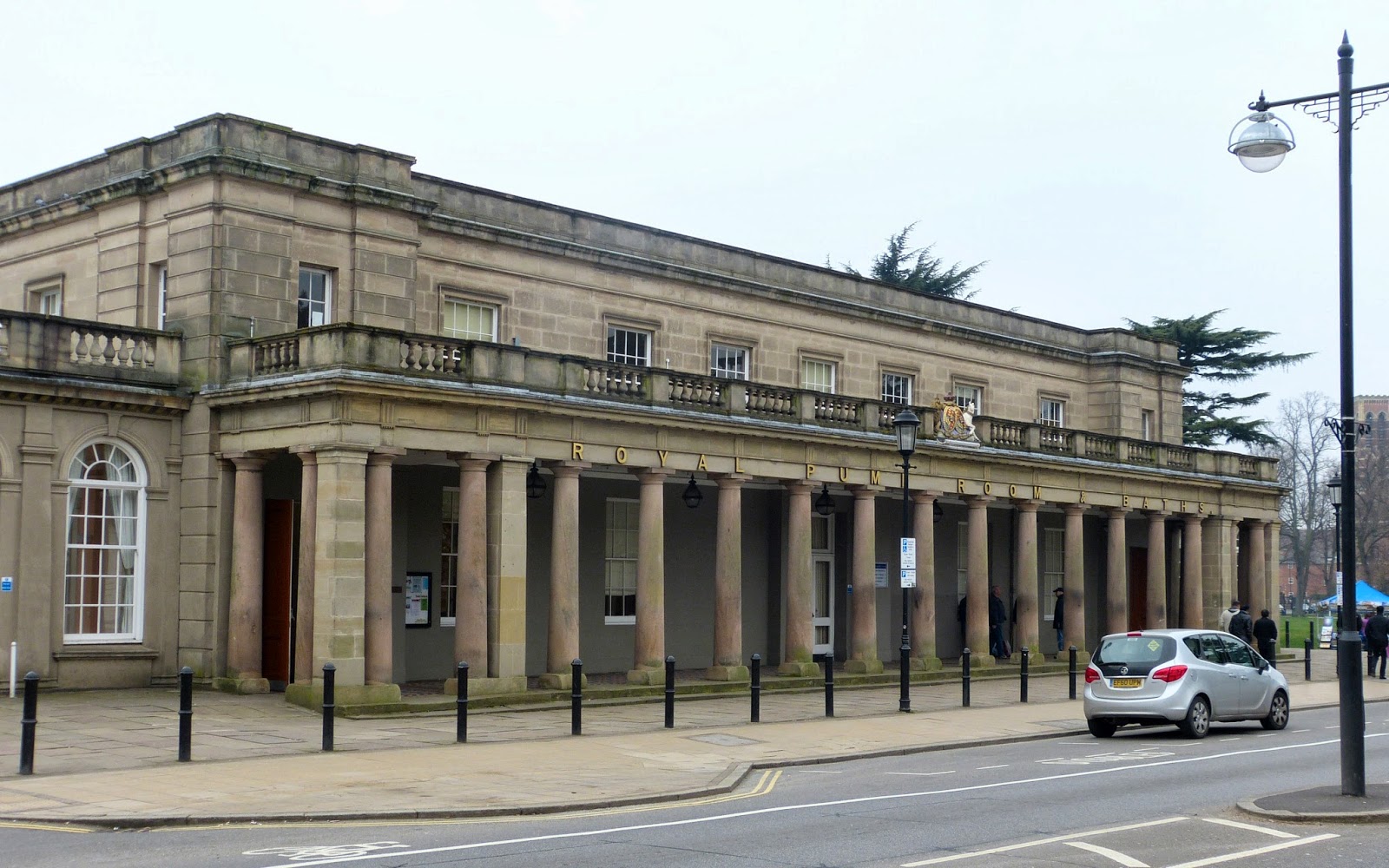 |
| Royal Pump Room and Baths, Leamington Spa |
A seventh spring was found in 1817 and a new set of baths called Smart’s Marble Baths, the Apollo Rooms or Imperial Sulphuric appeared on Clemens Street. The New Marble Baths included an assembly room and a library and offered three types of mineral water: saline, chalybeate (containing iron) and sulphurous.
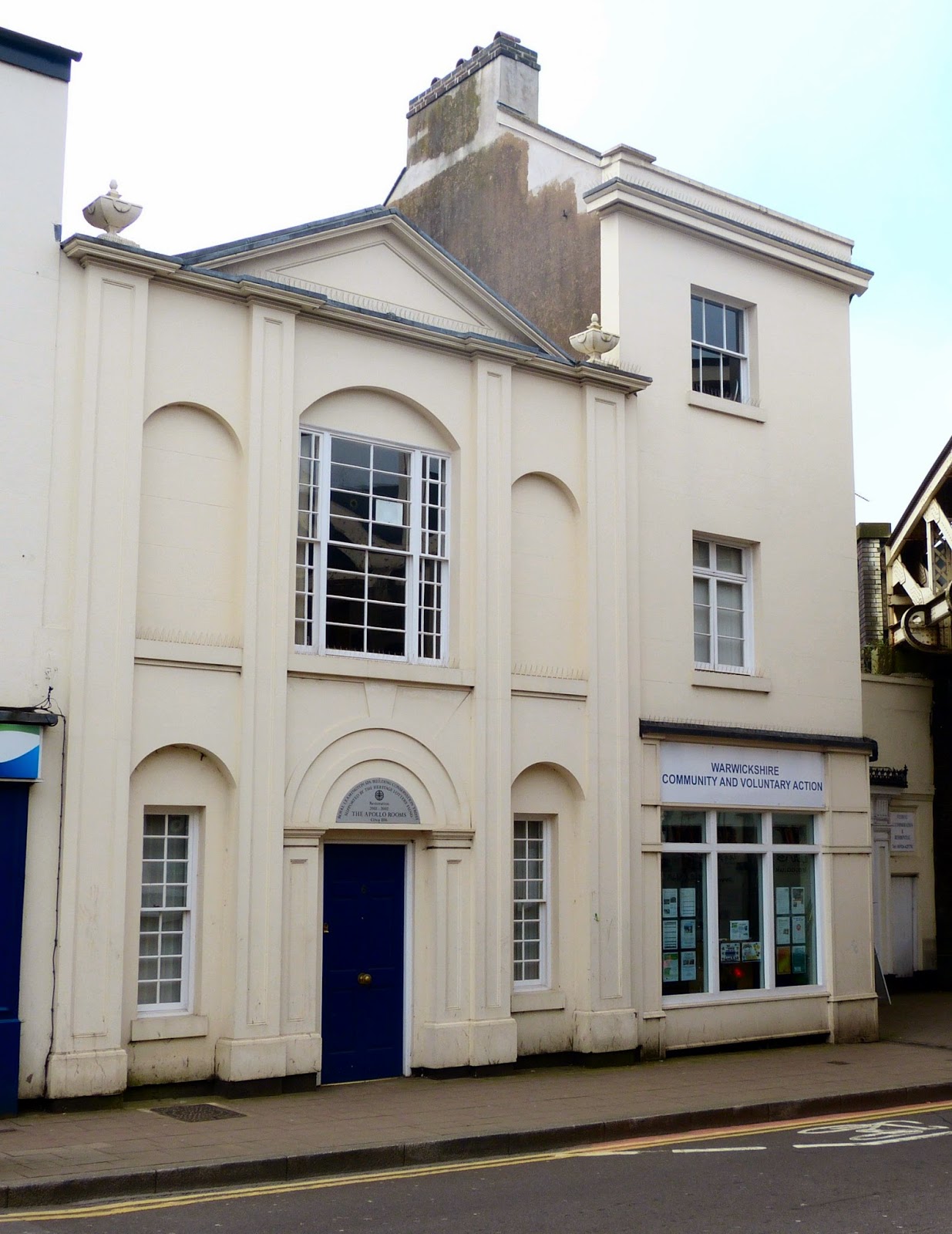 |
| The Apollo Rooms, Clemens Street |
Feltham’s 1815 guide mentioned two libraries: Mrs Rackstrow’s and Mr Olorenshaw’s, which also included a trinket shop and toy warehouse.
Assembly Rooms
The Assembly Rooms were situated in Cross Street in the New Town and in 1815 were superintended by Mr Rackstrow. The building included a refectory, a reading room and a billiard room as well as the “great room” where there was “a ball every week from April to November, also card assemblies almost every other evening”. (1)
The Old Town opened its own Assembly Rooms – at the Apollo Rooms on Clemens Street in 1817 and at the Parthenon on Bath Street in 1821.
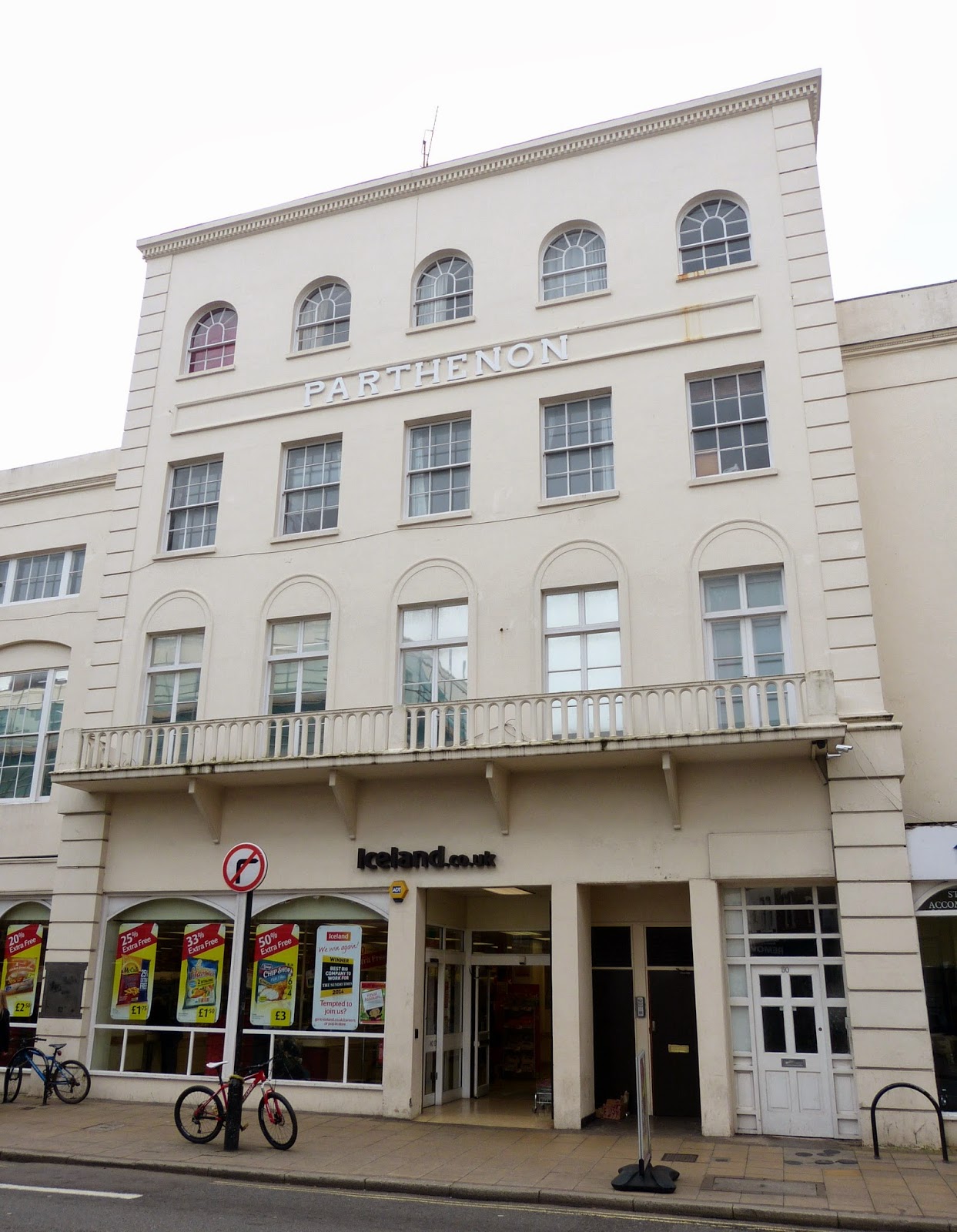 |
| The Parthenon, Bath Street |
The theatre, described by Feltham as “very compact”, was in Bath Street, opposite to the New Inn, in part of what is now the Jug & Jester pub.
 |
| The Jug & Jester pub, Bath Street |
There was a bowling green which was next to the Bowling Green Inn on the High Street.
Bisset’s Picture Gallery and Museum
James Bisset was a Birmingham businessman who “removed entirely to Leamington, leaving the Toy-shop of Europe”. (1) In 1812, he opened a picture gallery, public reading room and museum. Subscriptions cost three shillings per week, five shillings per month or 21 shillings for the whole season. Entry to each exhibition cost one shilling.
Bisset was an astute businessman. He wrote a guidebook and poetry to promote the town and enticed people to visit his gallery by maintaining a free list of visitors:
“A free Register of arrivals is kept at the Gallery, in which ladies and gentlemen are respectfully requested to enter their names and place of residence.” (1)
Rules for Drinking the Waters
by Mr Bisset
"At early dawn prepare to rise,
And if your health you really prize,
To drink the Waters quick repair,
Then take a walk to breathe fresh air,
Hie thro' the fields— or promenade
Round Pump Room grand, or Colonnade.
A second glass now take — what then?
Why! take a pleasant walk again,
The Waters, exercise, and air,
Will brace your nerves, your health repair.
Then to your breakfast haste away,
With what keen appetite you may." (1)
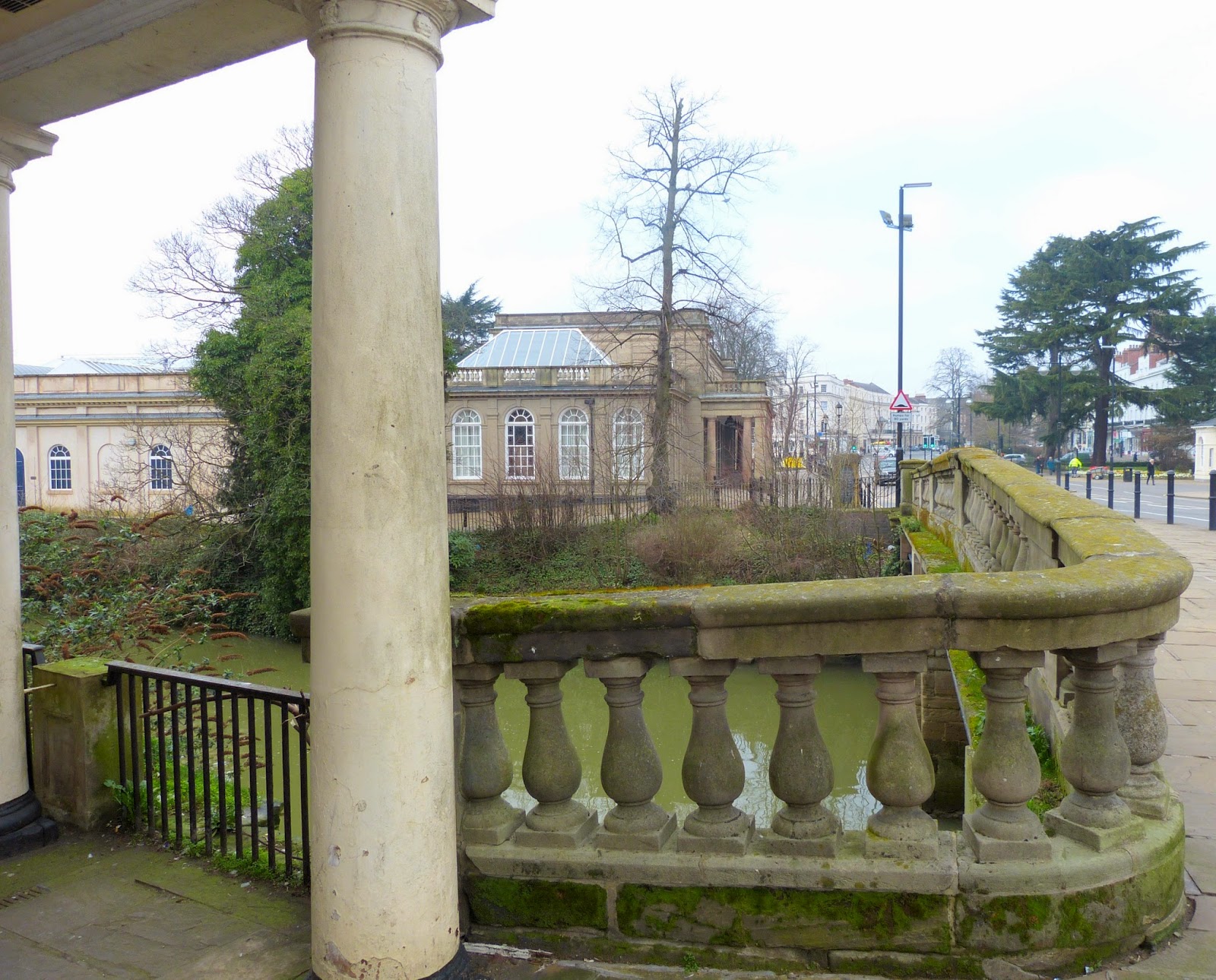 |
| The site of Robbins' Well, Bath Street Bridge |
Visitors to Leamington could walk around Mr Mackie’s Ranelagh Gardens or explore the Priory Gardens or Holly Walk.
Places of interest further afield included:
• The Leasowes, the beautiful gardens developed by the poet William Shenstone
• Hagley, with the neo-Palladian mansion created by George Lyttelton, first Lord Lyttelton
• Guy’s Cliff
• Offchurch
• Stoneleigh Abbey
• Warwick Castle
• Kenilworth
• Stratford-upon-Avon, the home of William Shakespeare
 |
| Warwick Castle |
Many people of fashion visited the resort including the Prince Regent and his sister Princess Augusta, Queen Adelaide, John Nash and the Duke of Wellington.
The future Queen Victoria visited the spa in 1830, and in 1838, after becoming Queen, she agreed to the town’s application to become known as Royal Leamington Spa.
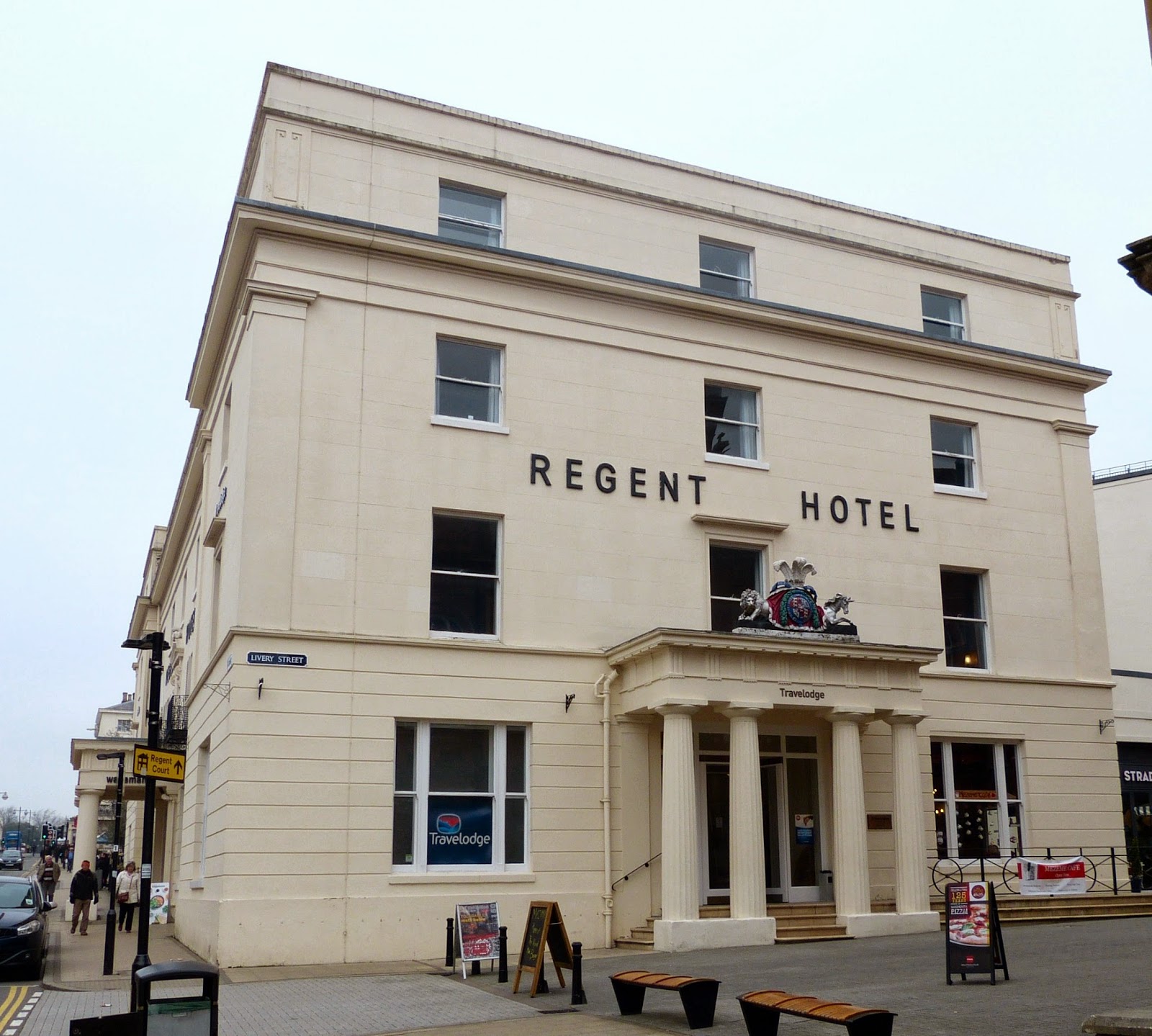 |
| Regent Hotel, Leamington |
(1) From John Feltham’s A Guide to all the Watering and Sea-bathing Places (1815)
Sources used include:
Feltham, John, A Guide to all the Watering and Sea-bathing Places (1815)
Watkin, Jeff (edited and revised from the exhibition in the Local History Gallery curated by David Howells), The Royal Pump Rooms and the growth of Leamington Spa (2002)
All photographs © Andrew Knowles - www.flickr.com/photos/dragontomato

What an interesting post. It's good to learn about the other lesser known spa towns.
ReplyDeleteTweeted :)
Thanks Shelley. What I found most interesting was the sheer number of baths available - five different ones in 1815 with another opened a few years later. I'm sure that Bath could not boast so many baths!
DeleteThe effect of the hot springs is still felt in Leamington today. Snow rarely settles for long in the lower parts of the town. As it is falling you can see that some streets are covered quickly while in others it quickly melts.
DeleteMy home town. Birthplace of Alistair Crowley.
DeleteThankyou for brill information. Have just been introduced to Leamington on weekend break and discovered this beautiful gem - fab architecture, scenic parks, unexpected "super" shops. Everything you could wish for, when in search of a relaxing escape into the past with all mod cons !
ReplyDeleteA good mixture of old and new - but I confess it was the old that drew me there. Some great Georgian buildings and the fascinating history of Leamington Spa as a watering place to go with it.
DeleteReally good post. I remember Leamington as a 'happening' place in the 1960s but confess I didn't take too much notice of the architectural attractions. Great place to visit.
ReplyDeleteThanks. There are a lot of Georgian buildings intermixed with the new. You have to be a bit of a detective (or following the museum's trail!) to find them.
DeleteThe Upper Assembly Rooms were situated on the corner of what is now Regent Street and the Parade. They were demolished in the 1870s and most Leamingtonians know the site better as the old Woodwards store. There still remains an old doorway from the Assembly Rooms on Bedford Street.
ReplyDeleteI am researching the various Masters of Ceremonies of the Upper Assembly Rooms who were mainly ex Army officers who served in the Napoleonic Wars. I am particularly interested in Francis Stenton who was MC from 1821 to 1830 who ran off to America with his pregnant mistress but Sir John Paul Hopkins was a decorated War Hero and Major Abiathar Hawkes was the head of the delegation to petition the newly crowned Queen Victoria for the town to receive the royal assent hence it's official name of Royal Leamington Spa.
I am very interested in this, my 3x great grandfather was Mr John Hewett, he had his own library and reading rooms near the site of what was Woodwards Store, he was an art dealer and musician. He had a lot to do with the Upper Assembly Rooms as well and I would not be surprised if he was a Master of Ceremonies as well, he was quite a prominent member of the town and he was regarded as one of Leamington's founding fathers coming to Leamington when it was a mere village, he was also one of the founders of Guy's Masonic Lodge along with his brother Thomas, they had their own band as well Hewett's Military Band. Before he came to Leamington he was in the Northamptonshire Militia during the Napoleonic wars. There is a lot about him in the Leamington Courier. John died in 1864, I would be interested if anyone has anymore info on him.
ReplyDeleteWould love to know more about David Johnson and then his son Alexander Johnson who were wine merchants at 13, Bath Street mid to late 1800s. They were very prosperous and had their own oval embossed bottles for the spa water and of course wine.
ReplyDelete